
 Copyright © Michael Richmond.
This work is licensed under a Creative Commons License.
Copyright © Michael Richmond.
This work is licensed under a Creative Commons License.
Getting to Saturn takes a lot of work -- literally. The Cassini probe was launched on a relatively powerful rocket, the Titan IV:

But even that rocket and the Centaur upper stage were not able to send the big Cassini spacecraft (mass 5,655 kg, of which 3,132 kg were propellent) straight to Saturn. It was necessary to use several planetary encounters to give the craft additional angular momentum:
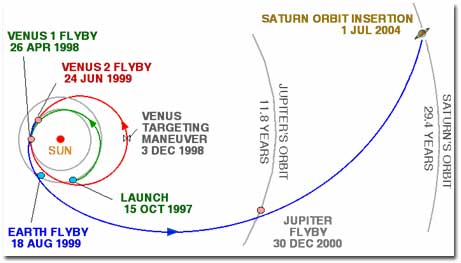
Q: How does flying past another planet help
Cassini to reach Saturn?
Note that in 1999, two years after launch, the spacecraft flew past the Earth. It was able to study both the Earth and the Moon as a sort of warm-up for its eventual mission to Saturn.
The final step in the journey to Saturn involved a gravitational boost from the planet Jupiter. In Dec 2000, Cassini zipped past the giant planet.
Cassini has many science instruments beyond its optical cameras. It can measure magnetic fields and the high-energy particles which inhabit them. As it passed through the Jovian system, it measured the local magnetic field:
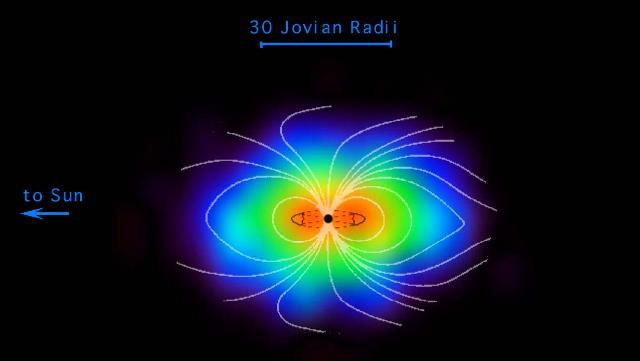
Three features are sketched in for context: a black circle showing the size of
Jupiter, lines of Jupiter's magnetic field, and a cross-section of the Io
torus, a doughnut-shaped ring of charged particles that originate from volcanic
eruptions on Jupiter's moon Io and circle Jupiter at about the orbit of Io.
Read this for more information
It was able to see some of the same volcanic features of Jupiter's Moon Io as the spacecraft Galileo had seen a decade earlier.
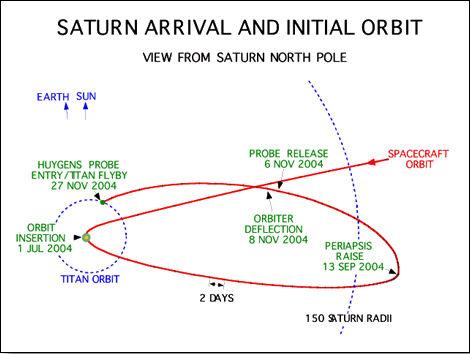
Eventually, over the next few years, mission controllers will fire small thrusters to adjust its orbit gradually, so that it spends more of its time in the inner Saturnian system, close to the interesting stuff: the planet, its rings, and the big moons.
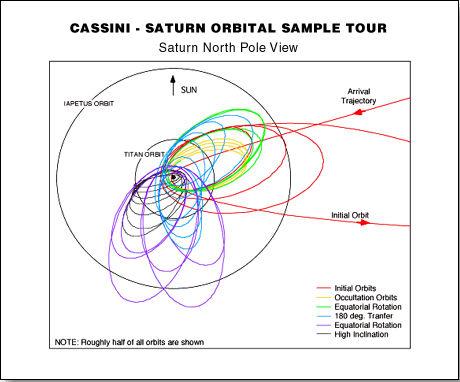
Despite the rush, it was able to gather a wealth of data on the planet and its rings during that first frantic passage.
Some of the most interesting information we can learn from the Saturn system concerns the structure and dynamics of the ring system.
As seen from afar ...
... and up close ...
The infrared spectrometer aboard Cassini can estimate the size of the ring particles from their infrared emission. It finds that the ring particles range from tiny grains (sort of snowflake size) to grains the size of sand. Strong features of water molecules appear in infrared spectra, indicating that the ring particles are rich in water ice.

The small moonlet Prometheus acts as a shepherd moon for the outer F ring.
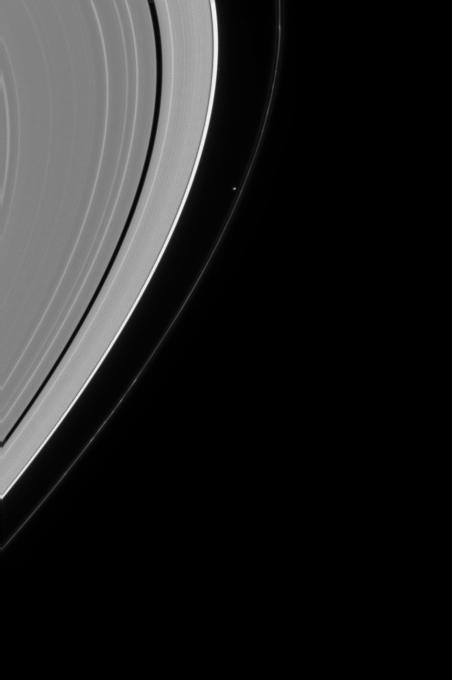
A closeup of Prometheus interacting with a few strands of the very thin F ring suggests that its gravitational force may be putting "kinks" into the ring's strands.
We can see other evidence for gravitational perturbations by small "moonlets" in the scalloped edges of the Encke Gap --
--- and in the waves which run across the A ring --
(here are two such waves running in opposite directions)
--- and in the ripples at the very edges of the rings.
The scientists who study the dynamical interactions of ring particles with the planet and its moons will have a field day ... or, more accurately, a field deCADE ... with all the information Cassini will provide.
At the recent (Jan 2005) meeting of the American Astronomical Society in San Diego, I heard one of the mission scientists describing how the very earliest images were already being used to estimate that the Saturnian ring system is roughly 10 meters thick, yet over 270,000,000 meters wide!
Let's go back to the initial "insertion" orbit around Saturn, in late 2004:

On November 6, 2004, the main Cassini spacecraft released a smaller probe called Huygens, which had just been hitch-hiking a ride.
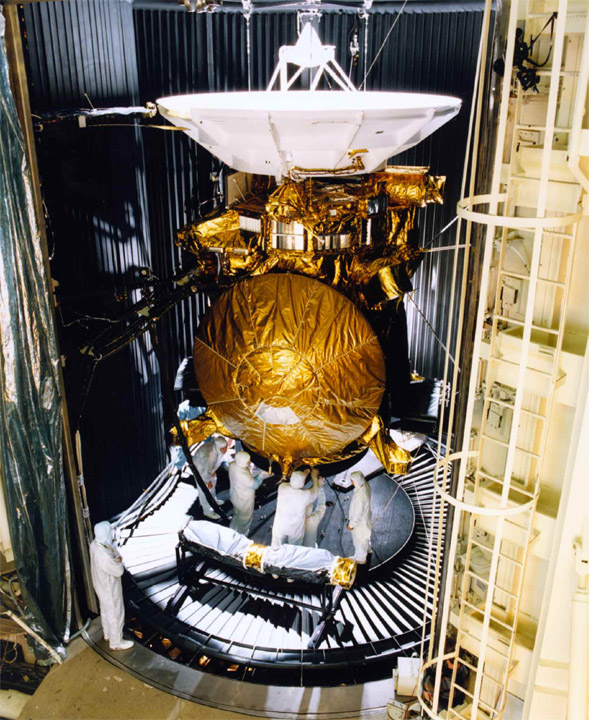
The European Space Agency (ESA) designed Huygens to make a visit to Saturn's largest moon, Titan. Why visit Titan? Because it's the only moon in the solar system with its own (thick) atmosphere, as this picture taken by Voyager 1 shows:
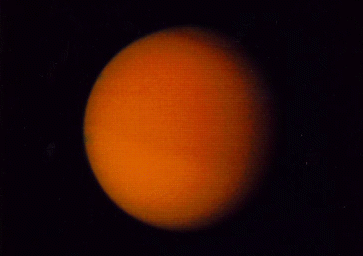
The gas is mostly nitrogen and methane, and very cold: the typical temperature is only 94K, or -180 Celsius. Brrrrrrr. But it is pretty thick, with a pressure about 1.5 times that of Earth's atmosphere.
Astronomers on Earth have made attempts to pierce the haze by using infrared telescopes and speckle interferometry from the ground, but it doesn't look very detailed:
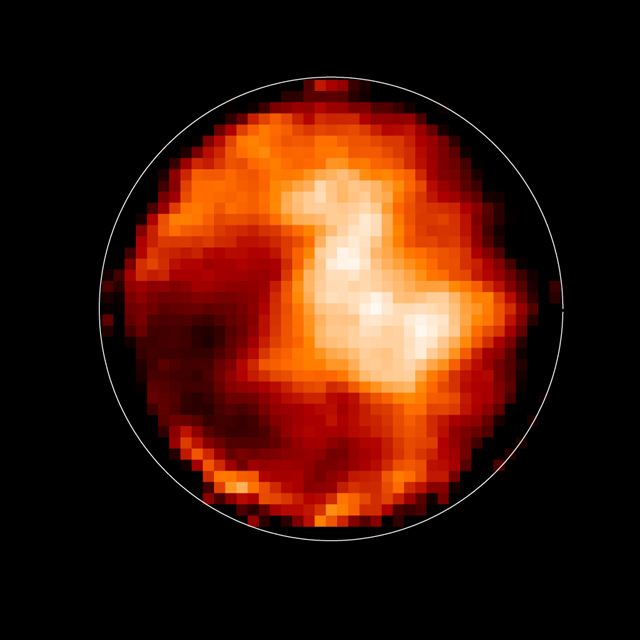
In July, 2004, as Cassini swept past Saturn for the first time, its infrared camera was able to take the best pictures of Titan's surface yet ...
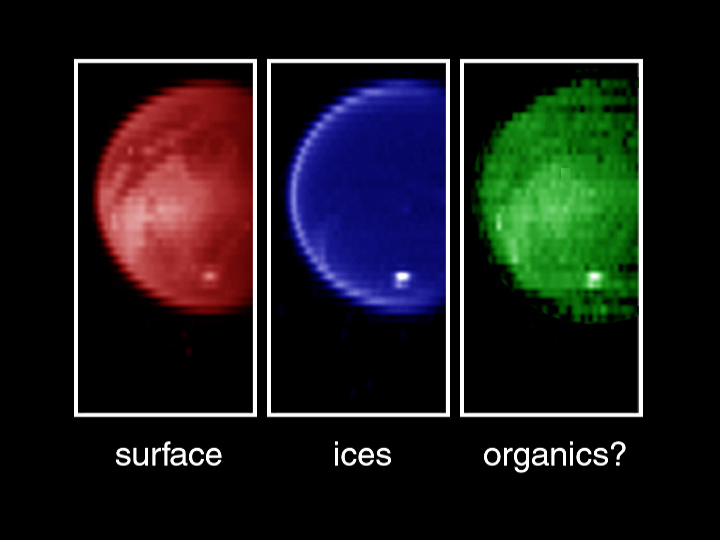
On October 26, 2004, the spacecraft flew past Titan and resolved even more detail with its infrared camera ...
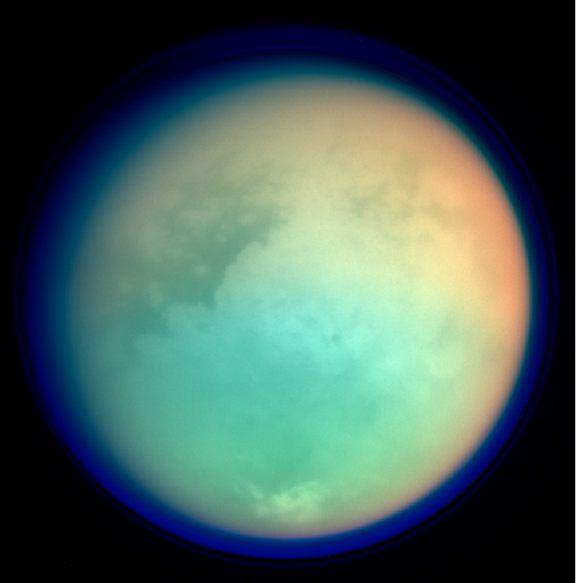
The plan was for the probe to slam into the upper atmosphere with its heatshield, then switch to a parachute in the lower, denser air, and finally land softly on the surface (whether solid or liquid).
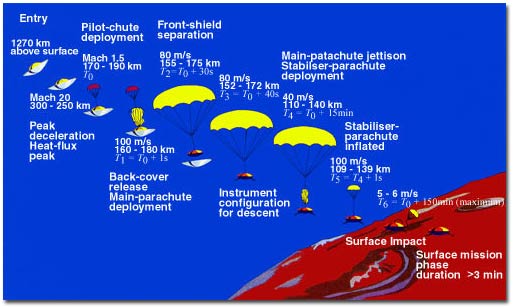
The probe has many instruments:
On January 14, 2005, the probe entered Titan's atmosphere.
As far as we can tell, almost everything went well. As it descended, Huygens took pictures of the surface below, revealing what appears to be a shoreline:
Here's an overview of the initial Huygens pictures all at once:
Initial analysis of the images taken on the surface reveal a small number of rounded rocks:
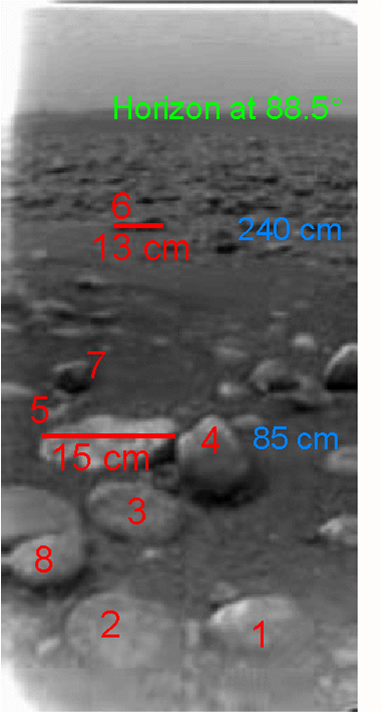
Image courtesy ESA/NASA/JPL/University of Arizona
 Copyright © Michael Richmond.
This work is licensed under a Creative Commons License.
Copyright © Michael Richmond.
This work is licensed under a Creative Commons License.